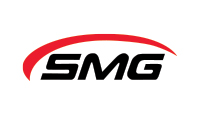This entry of my blog will talk about local limits and the factors triggering development of local limits.
As mentioned in my previous blog, local limits address the specific needs and concerns of a POTW, its sludge, its receiving waters and protection of POTW personnel.
Local limits are developed for pollutants that could cause interference, pass through, sludge contamination or worker health and safety problems. These limits are applicable to all IUs or all SIUs depending on the allocation method used when developing local limits, and these are usually imposed at the point of connection to the POTW (i.e., end-of-pipe).
Local limits are developed when the city:
•Has an approved Pretreatement Program;
•Receives wastewater from a SIU,
•Receives wastewater from other non-domestic sources that have had:
•Pass through of pollutants at the POTW’s treatment system and result in violation of effluent limitations or receiving water standards;
•Interfere with POTW’s collection or treatment works, such that regulatory compliance or operating costs are significantly affected;
•Sludge pollutant levels limits biosolids use/disposal;
•Toxic gases, vapors or fumes causing worker health and safety concerns.
Other factors that trigger local limits are:
•Modification to the treatment plant or its processes;
•Changes to the KPDES permit discharge limitations;
•New Water Quality Standards for receiving stream;
•New or increased industrial discharges to POTW; or
•KPDES discharges or sludge disposal violations.
In my next blog I will be talking about the process of evaluating the need for local limits development.
If you have any questions, please contact me at shrivani@smithmanage.com
Source: U.S. EPA Introduction to the National Pretreatment Program, 2011.
